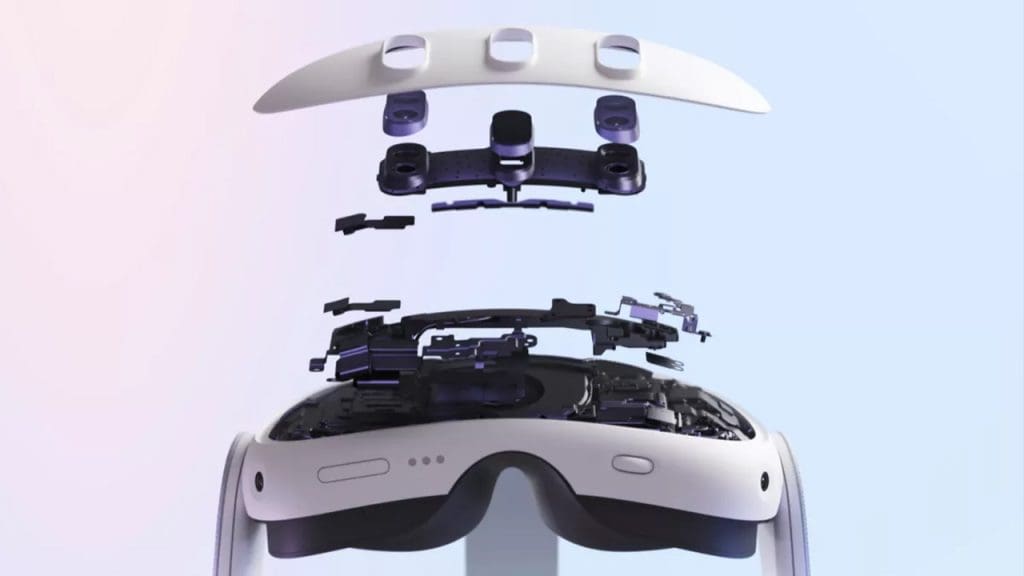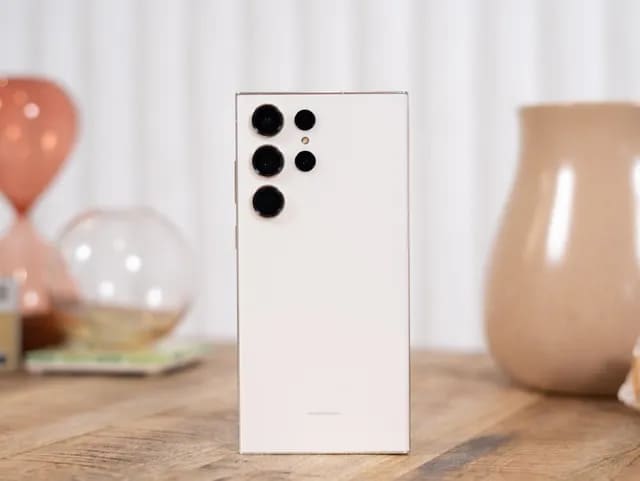With a sleek new design, powerful hardware, and a wide range of games and apps, Meta Quest 3 is the perfect way to experience the future of VR.
Meta is launching the Quest 3 later this Fall for $499. It has twice the graphics processing power, higher-resolution displays, and is 40% thinner than Quest 2. It is also fully backward compatible with all Quest games.
A new depth sensor enables better mixed-reality experiences. Full-color passthrough is also better than ever, and it is almost lifelike.
The new redesigned controllers are smaller and include better TruTouch haptics.
Meta CEO Mark Zuckerberg unveiled the Meta Quest 3 on Instagram today. The new headset is a major upgrade over the Quest 2, with a sleeker design, a more powerful processor, and higher-resolution displays.
The Quest 3 is 40% thinner than the Quest 2 and features a new depth sensor for improved mixed-reality experiences. It also has a brand-new processor that delivers twice the graphics processing performance of the Quest 2. This means that users can enjoy clearer and sharper visuals, larger, more realistic worlds, and more immersive experiences than ever before.
Meta will be sharing more details about the Quest 3 processor and displays at Meta Connect in September. However, based on what we know so far, the Quest 3 looks to be a major step forward for virtual reality.

Meta introduces its new mixed-reality (MR) system called “Meta Reality,” boasting a simpler setup and enhanced depth perception for a seamless experience. With this advancement, you can effortlessly enjoy mixed reality games like Demeo on your tabletop, eliminating the need for complex arrangements.
The Quest 3 marks Meta’s inaugural entry into the mass market, offering state-of-the-art VR and MR experiences within a single device. This achievement is made possible by the inclusion of new color passthrough cameras, boasting 10 times the pixel count of its predecessor, Quest 2. Additionally, the device features a cutting-edge depth sensor capable of automatic object and room detection and mapping.

The redesigned head strap, although still cloth-based, ensures improved comfort and enhanced adjustability compared to the Quest 2. The Quest Pro’s premium feature, pancake lenses, also make their debut in the Quest 3. These lenses are thinner and provide clearer visuals, further enhanced by an IPD adjustment wheel conveniently located on the headset’s exterior.
According to Meta, this headset represents their inaugural mass-market offering that seamlessly combines virtual reality and mixed reality experiences.
Meta plans to lower the price of the Quest 2 next month while introducing an exciting new dynamic resolution feature. This innovative feature is expected to enhance the performance of the Quest 2 by an impressive 26%. With the upcoming release of the Quest 3, users can anticipate even greater performance improvements, effectively bridging the gap between the Quest 2 and Quest 3.
Moreover, the Quest 3 ensures full backward compatibility with all Quest 2 games, providing a seamless transition for users. Set to launch in the Fall, the Quest 3 will be available starting at an affordable price of $499, making it accessible to a wide range of gamers.

The Quest 3 Touch Plus controllers bear a striking resemblance to the Quest Pro controllers, with one notable distinction: the absence of cameras on these controllers. Additionally, unlike the Quest 2, there is no tracking ring encircling the controllers.
While Meta has not disclosed specific details about the tracking mechanism for these controllers, it is reasonable to assume the presence of LEDs strategically positioned for camera-based tracking. With the inclusion of a depth sensor in Quest 3, we can expect Meta to leverage data from this sensor to enhance tracking accuracy and fidelity. Moreover, the Quest 3 features bottom-facing cameras on each side, ensuring a similar tracking approach to the Quest 2.
Furthermore, we have some insights into the TruTouch haptics embedded in the Quest 3 controllers, which are identical to those employed in the Quest Pro controllers. These advanced haptics elevates the VR experience, delivering more realistic and nuanced feedback compared to the Quest 2 controllers’ lower fidelity haptics.
These new controllers are sleeker, smaller, and offer enhanced haptics compared to the Quest 2. Additionally, the introduction of a new depth sensor improves hand tracking.
According to Meta, the Quest 3 allows the use of Quest Pro controllers, ensuring a “premium tracking experience” surpassing the capabilities of the new Quest 3 controllers. This means that users who have already upgraded to Quest Pro controllers will not be disappointed.
Furthermore, the Quest 3 supports hand tracking from the moment you start using it, enabling gameplay and app usage without the need for controllers. With the addition of the new depth sensor and improved cameras, the hand-tracking experience on the Quest 3 is expected to surpass the current capabilities of the Quest 2.




















